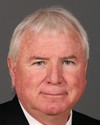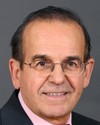Yes. The two programs that peak and trough, depending on the capacity we have to deliver them, are Bold Eagle and Tommy Prince. Bold Eagle attracts reserve soldiers and Tommy Prince attracts them into the regular army. That's just for the army; I'm not talking about the maritime or air forces. The answer is, yes, we are working hard to attract, recruit, and enroll members of all communities across the country, including aboriginals.
Bold Eagle doesn't get you a full-time soldier; it gets you a reserve soldier. We hope it creates a network of positive experiences and essentially expands the network of more positive experiences for more people to be attracted to join us.
Our recruiting centres are deliberately no longer looking at their communities as if they're all one. Communities are communities of communities. They're orienting the recruiting drive to target—maybe that's not a good word—to communicate with communities in their culture and in their language to bring them to us. We're asking them to join a national institution called the Canadian Forces. We're not trying to sell them a bill of goods here. We adapt or communicate, in the language and in the methods that appeal to those communities, our profession as a Canadian institution to attract them to us, without having to treat everybody the same in terms of the method of communication.
In British Columbia, we have a hugely successful program that speaks to the Indo-Canadian community and specifically communicates with them and to them through methods and outreach programs that work for them. But the minute a young man or woman of that community joins us, they're joining a national institution. If we can accommodate them, as we are doing with dress and ceremonial factors, then all the more power to them and all the more power to us.




